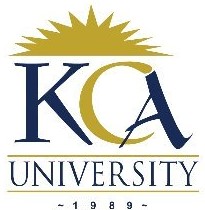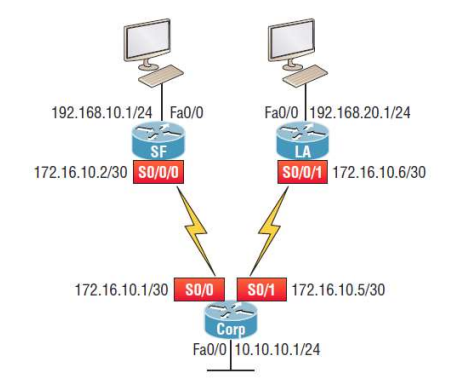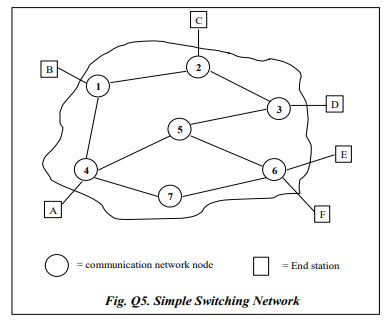 UNIVERSITY EXAMINATIONS: 2018/2019
UNIVERSITY EXAMINATIONS: 2018/2019
EXAMINATION FOR THE DEGREE OF BACHELOR OF SCIENCE IN
INFORMATION TECHNOLOGY /BACHELOR OF SCIENCE IN
INFORMATION COMMUNICATIONS TECHNOLOGY / BACHELOR OF
APPLIED COMPUTING
BIT4302 TELECOMMUNICATIONS
FULL TIME/PART TIME/DISTANCE LEARNING
DATE: APRIL, 2019 TIME: 2 HOURS
INSTRUCTIONS: Answer Question One & ANY OTHER TWO questions.
QUESTION ONE [30 MARKS]
a) Discuss any four merits and two demerits of changing from analog to digital
communication systems. 6 Marks
b) With the aid of a diagram, explain how the Public Switched Telephone Network (PSTN)
is organized and identify the most bandwidth-constrained portion of the network 6 Marks
c) With the aid of appropriate examples, briefly explain why telecommunications is critical
to the operations of modern business. 6 Marks
d) The switching network could be packet switched or circuit switched. Briefly highlight the
features of each type of switching network. 6 Marks
e) Telecommunications systems use various media types to deliver information from source
to destination. With any communications medium, the received signal will differ from the
transmitted signal due to various transmission impairments. Specify and explain any three
transmission impairments. 6 Marks
QUESTION TWO [20 MARKS]
a) Identify the four components of a telecommunication system. 4 Marks
b) The WAN access physical layer describes the physical connection between the company
network and the service provider network. Describe the following as commonly used to describe
physical WAN connections:
(i) CPE 3 Marks
(ii) DCE 3 Marks
c) Discuss the importance of segmenting messages before transmission. 5 Marks
d) Networks rely on intermediary devices to provide connectivity and to work behind the
scenes to ensure that data flows across the network. These devices connect the individual hosts to
the network and can connect multiple individual networks to form an internetwork. State five
functions performed by processes running on intermediary devices. 5 Marks
QUESTION THREE [20 MARKS]
a) Study the Fig.Q3 diagram in the next page very carefully and answer the following
questions:
Fig Q3

The computer connected to SF is Comp1 and that connected to LA is the Server. The link
between the Comp1 and SF is at 100Mbps. The link between SF and Corp is an E1 link. The link
between Corp and LA is at 10 Mbps and the link between LA and the server is at 1000Mbps. The
server has a 20MB file which Comp1 needs to download. Assume all delays are negligible.
(i) Suppose no other computers are connected to the server, how long does Comp1
take to download the file? 3 Marks
(ii) Suppose there are nine other computers connected to the server through link Fa0/0
interface of Corp, how long will Comp1 take to download the same file?
4 Marks
b) Explain briefly each of the six major transmission functions that are required in long
range communications. 6 Marks
c) Describe the steps involved in a complete communication process. 7 Marks
QUESTION FOUR [20 MARKS]
a) With the aid of a diagram, describe components of ISDN including the composition and
data rates of BRI and PRI. 7 Marks
b) Describe briefly any five components of a VoIP network. 5 Marks
c) With the aid of relevant diagrams, describe the principal components of a digital
communication system. 8 Marks
QUESTION FIVE [20 MARKS]
Fig. Q5 shows a simple switching network, which may be a voice network or data network.
Study the diagram and respond to the following questions.
(a). Explain why the switching network is not (in practice) of the full mesh type unless under
special circumstances. 2 Marks
(b). Determine the number of links the network would have if it was full-meshed. 4 Marks
(c). Name any TWO types of devices that can be considered to be “end stations”. 2 Marks
(d). The switching network could be packet switched or circuit switched. Briefly highlight the
features of each type of switching network. 6 Marks
(e). Explain why the Public Switched Telephone Network (PSTN) is inherently circuit switched
while the data network such as the Internet is inherently packet switched. 6 Marks
Fig. Q5. Simple Switching Network
= communication network node = End station

